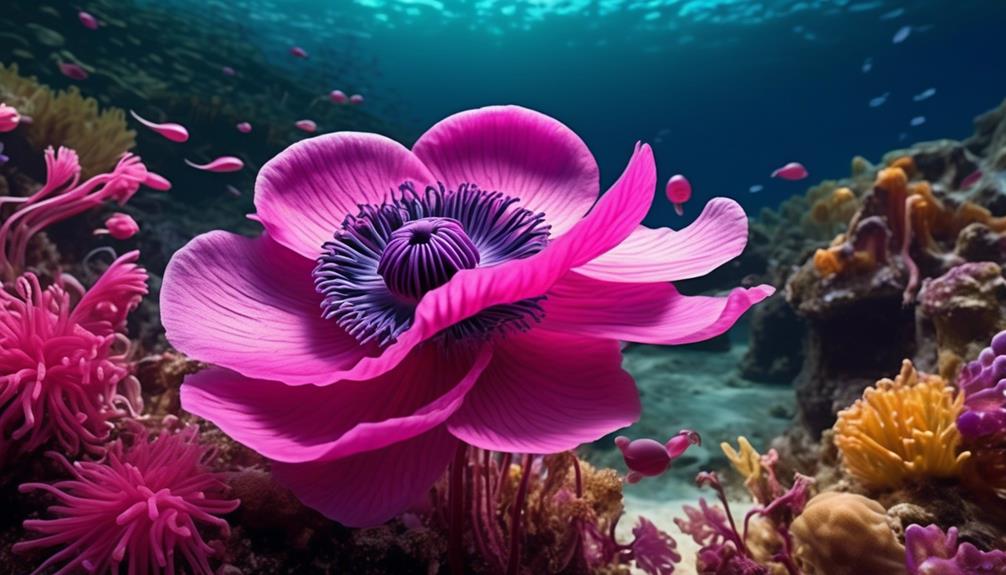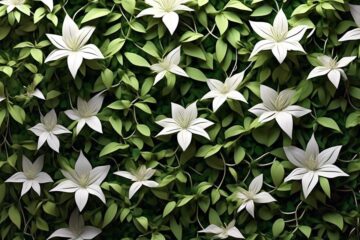Have you ever wondered about the mysterious world of anemones? These captivating creatures, with their unique life cycle and symbiotic relationships, hold a wealth of secrets waiting to be unraveled.
From their intricate reproductive strategies to their venomous stinging cells, anemones possess a fascinating array of characteristics that make them a subject of intrigue and study.
So, let’s dive deeper into the realm of anemones and uncover the hidden wonders that await us.
Table of Contents
ToggleIntroduction
Anemones, fascinating creatures of the sea, are known for their unique life cycle and remarkable anatomy. Sea anemones have a distinctive way of reproducing, both sexually and asexually. They release sperm and eggs into the sea, but they can also break into smaller pieces to create new individuals.
When it comes to their anatomy, anemones have tentacles, a mouth, retracting muscles, gonads, and acontial filaments. These features help them survive and thrive in their marine habitats.
Anemones also form beneficial relationships with other organisms like clownfish, hermit crabs, and single-celled algae. They provide shelter and protection for these partners, while the partners in turn offer food and nutrients.
To grow anemones, corms are commonly used. These corms can be soaked in water before being planted in early spring. Anemones are hardy in certain zones, making them a popular choice for marine enthusiasts.
Story and Origins
Sea anemones have a rich and intriguing story that traces back to the depths of the ocean. Anemone species, such as the Grecian anemone (Anemone coronaria), have captivated humans for centuries.
In ancient Greece, these delicate flowers were treasured for their vibrant colors and were often planted in gardens and used in religious ceremonies. The cultivation of anemones from corms has played a significant role in their story. By growing them from corms, the same traits as the mother plant can be ensured, resulting in more robust plants with better resilience to extreme temperature fluctuations.
This method of propagation has allowed the beauty and diversity of anemones to be appreciated around the world. From their origins in the ocean to their presence in our gardens, the story of anemones continues to fascinate and enchant.
Symbolic Significance
As you explore the captivating story of anemones, it becomes evident that their symbolic significance holds a profound and multifaceted meaning. In many cultures, anemones are seen as symbols of anticipation and anticipation.
Their delicate petals and vibrant colors represent the beauty and fragility of life. Additionally, anemones are often planted to improve the soil as they have a deep root system that helps to aerate and nourish the earth. They thrive best in well-drained soil and can also symbolize resilience and adaptability.
Furthermore, the anemone’s ability to close its petals at night provides protection from predators and symbolizes the importance of self-preservation. Overall, anemones serve as powerful symbols in various contexts, reminding us of the interconnectedness of nature, the transience of life, and the need for protection and preservation.
Hidden Meanings
Delving deeper into the world of anemones, their hidden meanings become apparent.
The sea anemone, with its vibrant colors and graceful movements, has long been associated with various symbolic interpretations.
In ancient Grecian culture, the anemone was seen as a symbol of protection and was often planted in gardens to ward off evil spirits.
The planting of anemones from corms, the bulb-like structures from which they grow, represents the idea of new beginnings and growth.
The delicate foliage of the anemone, with its intricate patterns and soft textures, symbolizes beauty and grace.
Additionally, the anemone’s ability to sting and defend itself symbolizes strength and resilience.
Through these hidden meanings, the anemone reveals itself as a powerful symbol in the natural world.
Anemone Care Tips
To properly care for anemones, follow these essential tips to ensure their health and longevity.
- Anemones are commonly grown from corms, which are bulb-like structures.
- When planting anemones, make sure to choose a well-drained soil, as they prefer moist but not waterlogged conditions.
- Before planting, soak the corms in water for a few hours to rehydrate them.
- Dig a hole that’s slightly larger than the corm and place it in the hole with the pointed end facing up.
- Cover the corm with soil, leaving a small portion exposed.
- Water the newly planted anemone thoroughly and keep the soil consistently moist, but avoid overwatering.
- Anemones also benefit from regular fertilization during the growing season.
With proper care, your anemones will thrive and add beauty to your garden.
Gift-Giving Occasions
Gift-giving occasions are special moments in which you can express your love and appreciation for others through thoughtful presents. When it comes to gift-giving occasions, consider the recipient’s interests and needs.
If they enjoy gardening, why not give them the opportunity to grow Anemones? These hardy plants are easy to care for and can add beauty to any garden. Anemones have attractive foliage and produce stunning cut flowers, making them a perfect gift for those who appreciate nature’s beauty.
Additionally, different cultures and regions may have specific gift-giving traditions and customs for various occasions. Taking the time to learn about these traditions can help you choose a gift that isn’t only thoughtful but also respectful of the recipient’s cultural background.
Concluding Thought
As you wrap up your gift selection process, remember that the joy of giving goes beyond just the physical present. When considering gifting anemones, keep in mind that these beautiful flowers can bring lasting happiness and beauty to someone’s life.
Anemones can be easily planted using corms, which are underground storage organs. Ensure that the planting location receives adequate exposure to sunlight, as anemones thrive in sunny spots. To promote healthy growth and vibrant blooms, enrich the soil with organic matter.
As the anemones grow, their lush foliage will add a touch of greenery to any space. By giving the gift of anemones, you aren’t only sharing a lovely present but also the opportunity for your loved ones to experience the joy of nature’s beauty.
Frequently Asked Questions
Do Anemones Come Back Every Year?
Yes, anemones come back every year. They have a perennial life cycle, meaning they can survive through different seasons and regrow from their corms. Taking proper care of them ensures their return.
What Are Anemones Known For?
Anemones, known for their vibrant colors and graceful movements, are fascinating creatures. They form symbiotic relationships, inject venom with their nematocysts, and have a unique life cycle. Dive into their world and discover their wonders.
What Month Do Anemones Bloom?
Anemones bloom between May and June, and sometimes as early as April or as late as July. The blooming time can vary based on species, climate, and growing conditions. Understanding when they bloom helps with planning and care.
Where Do Anemones Grow Best?
Anemones grow best in coastal tropical waters, where they thrive and provide habitats for various organisms. The largest and most diverse species can be found in these regions, making them an ideal environment for anemone growth.





